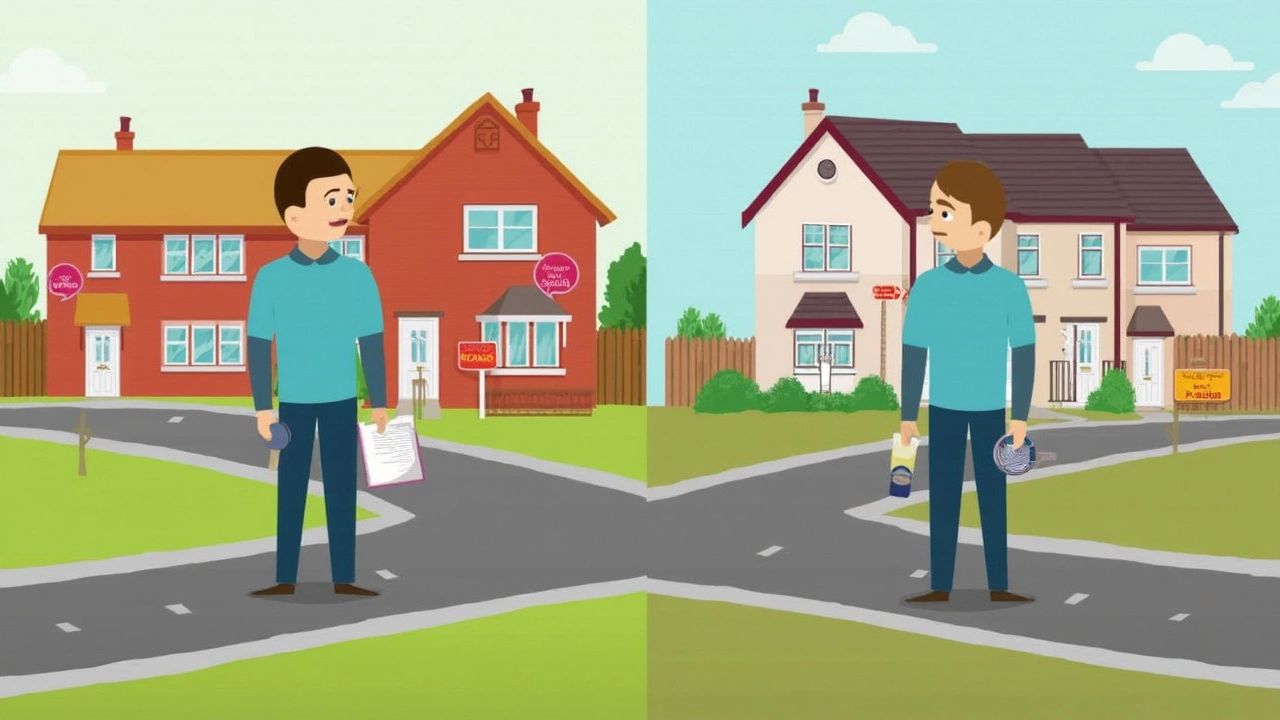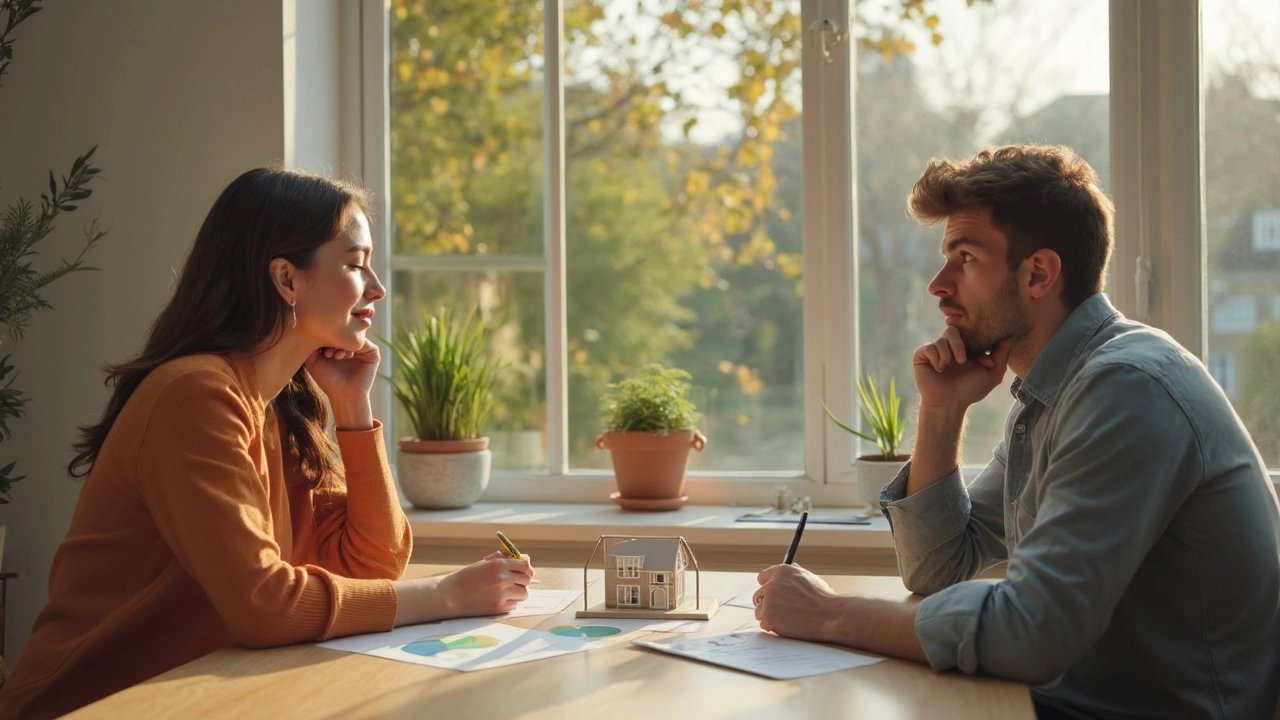If you feel squeezed out by soaring house prices, shared ownership probably sounds tempting. You buy a chunk of a home (often between 25% and 75%), and you rent the rest from a housing association. That’s less cash up front, a smaller mortgage, and a place to call your own—at least, partly.
So, is buying shares in one of these homes a wise move or just another way to get stuck paying rent? Digging into the details, it’s not all sunshine and easy payments. Some folks run into surprise costs and realize later that getting in—and out—of shared ownership isn’t so simple. But for plenty of people, it’s a real chance to start building equity in a tight market.
This article breaks down what’s really going on behind the glossy sales brochures. You’ll see how the numbers stack up, which traps can catch buyers off guard, and how this option measures up against other ways into the property market. If you’re weighing up whether shared ownership is right for you, grab a coffee: we’re about to dig into what really matters before you put your money down.
- How Shared Ownership Works
- The Financial Ups and Downs
- Hidden Costs and Risks You Need to Know
- Shared Ownership vs Other Options
How Shared Ownership Works
Shared ownership is pretty much what it sounds like. You buy a part-share—usually between 25% and 75%—in a property. The rest is owned by a housing association, and you pay rent on their portion. This system lets people get onto the housing ladder with a much lower deposit than what you’d need to buy the whole place outright.
The way it usually works is like this: you put down a deposit on your share (say, 10% of your 40% slice) and get a mortgage for the rest of your share. On top of your mortgage payments, you pay rent to the housing association for their bit, plus service charges and maintenance costs. The good news? Rent on the share you don’t own is typically below market rent.
- Initial Share: You pick how much of the home you can afford to buy. Most people start with 25-50%.
- Deposit: Usually 5-10% of your chunk of the home, not the whole price. So, lower upfront costs.
- Staircasing: You can buy bigger shares later (in chunks), up to 100%. Each time, you pay at the home’s current market value, not the original price.
- Eligibility: Not everyone can get shared ownership. It’s mainly for first-time buyers with household incomes below £80k (£90k in London).
For example, if you buy a 40% share in a £300,000 home, you’ll pay a deposit and mortgage only on your £120,000 part. You’ll rent the other 60% from the association. Rent rates are normally set at around 2.75% of the unsold share per year, so you’d pay rent on that £180,000 portion.
| Share Owned | Deposit Amount (10%) | Monthly Rent (on unsold share) |
|---|---|---|
| 25% | £7,500 | £515 |
| 50% | £15,000 | £343 |
| 75% | £22,500 | £172 |
This simplified table assumes a £300,000 home and a 2.75% annual rent on the housing association’s share, split over 12 months. Real figures can vary depending on your local market and the specific housing association.
Key thing to remember: even though you live in the whole property, legally, you only own your share. You’ll still need permission from the housing association for big renovations or if you want to sell. The shared ownership approach can work out great for those struggling with huge deposits, but it comes with its own rules and restrictions.
The Financial Ups and Downs
The main reason folks jump into shared ownership is the lower upfront cost. Instead of scraping together a deposit for the whole home, you only need one for your share. For instance, buy a 40% share of a £300,000 home, and your deposit could be as little as £6,000 (5% of £120,000). That's a world away from what you'd pay as a first-time buyer for the whole thing.
But here’s where it gets real: even though you own part, you’ll pay rent on the rest. Most housing associations set the rent at around 2.75% of the home’s remaining value per year. As an example, let’s break down how costs can stack up:
| Share Owned | Monthly Mortgage | Monthly Rent |
|---|---|---|
| 40% | £570 | £412 |
| 60% | £850 | £275 |
There’s more. You’ll still pay 100% of the service charges, maintenance, and council tax. That catches a lot of people off guard. You’re not off the hook just because you only own part of the place.
One big plus: as you save up, you can "staircase"—buying more shares in your home over time. Get to 100%, and you own outright (though the costs to staircase—valuation fees, legal fees, stamp duty—can add up, so they’re worth budgeting for).
On the flip side, selling your share isn’t always fast. The housing association usually gets first dibs to sell to someone else in the shared ownership scheme. Sometimes it takes months to find a buyer, especially in patchy markets.
And remember, if your home’s value drops, so does your share. The 2008 housing crisis hit lots of shared owners hard—they owed more than their homes were worth. That said, in a rising market, you can still build equity just like any other homeowner, but it usually takes more patience and careful planning.

Hidden Costs and Risks You Need to Know
Buying shares in a shared ownership home isn’t just about splitting the cost of a house. There’s a bunch of costs and risks that most buyers don’t spot until later. Let’s get straight to it—mortgage payments only cover the part you own, but you’ll still pay rent on the rest, and that rent can go up every year. It’s not locked in. Most housing associations use something called RPI (Retail Price Index) to bump up rent, and that’s no joke if inflation spikes.
Then there are the hidden fees. Think service charges, maintenance costs, and sometimes ground rent if you’re in a flat. Even if you only own 25% of the place, you’re usually on the hook for 100% of repairs and maintenance. That’s right—fixing the boiler or a leaky roof, it’s all on you. There have even been stories of people stuck paying out thousands for cladding repairs after fire safety rules changed in the UK, even though they only owned a slice of the property.
And don’t forget about staircasing—the process of buying a bigger share. It sounds easy, but every time you staircase, you’ll need to pay for a valuation, solicitor fees, potentially another mortgage arrangement fee, and stamp duty once you cross 80% ownership. Those costs add up fast.
If you want to sell, brace yourself. Selling a shared ownership home can take longer than a regular sale. Many housing associations get first dibs on finding a new buyer. If they can’t, only then can you market it widely. That means it’s not always quick or simple to get out if your life changes or the market turns.
- Monthly rent goes up—usually tied to inflation, not your income.
- Maintenance and service charges—you pay the full whack, whatever your share size.
- Fees for staircasing—expect surveyor and solicitor bills every time.
- Limited control when selling—the housing association often controls the process for weeks.
Here’s a look at what to budget for if you go for shared ownership:
| Cost Type | Typical Annual Range (UK 2024) |
|---|---|
| Service Charges | £1,200 - £2,500 |
| Rent Increases | RPI + 0.5% (varies yearly) |
| Maintenance & Repairs | £500 - £4,000 (if major) |
| Staircasing Fees/Costs | £1,000 - £3,000 per step |
Bottom line—shared ownership homes can be a stepping stone, but you need to go in with eyes wide open to the hidden costs and all the possible snags. Read the fine print and talk to owners who’ve been through it before rushing in.
Shared Ownership vs Other Options
So, is shared ownership your best shot at owning a home, or are there better ways to get on the housing ladder? Let’s line up the main routes and see how they stack up against each other.
- Shared Ownership: You buy a share (usually 25–75%) and pay rent on the rest. The upfront deposit is smaller because it’s based only on the part you buy. This suits people short on savings or with modest incomes. But you need to factor in rent, service charges, and potential restrictions when selling your share. And remember, you’ll need to pay stamp duty on the full share if you hit 80%.
- Buying Outright: Classic route—buy 100% of a home through a normal mortgage. You don’t pay rent, just your mortgage and regular house costs. Deposits and monthly payments are usually much higher because you’re covering every bit of the home’s price. You can sell whenever you want, with no extra hoops to jump through.
- Help to Buy Equity Loan (England): If you qualify, the government lends you up to 20% (40% in London) interest-free for five years. You provide a 5% deposit and a 75% mortgage. But the scheme ends March 2023, so check if it’s still available in your area. After five years, interest kicks in on the loan.
- Renting: Zero equity, but ultimate flexibility. You can move without selling. All your monthly payments go to the landlord, so you’re not putting down any financial roots.
Want to see the cost differences? Here’s a snapshot comparing monthly costs for a typical £300,000 home:
| Option | Deposit | Mortgage Payment | Rent/Loan Payment | Total Monthly Cost (Estimate) |
|---|---|---|---|---|
| Shared Ownership (50%) | £7,500 | £643 | £344 (rent) | £987 |
| Full Ownership | £15,000 | £1,287 | - | £1,287 |
| Renting | £0 | - | £1,300 | £1,300 |
These numbers are ballpark, but they show how buying shares in a home can shrink your deposit and lower your upfront costs. Just mind the long-game. In shared ownership, as rents creep up and service charges get added, the savings can shrink over time—especially if you don’t “staircase” (buy more shares) or if house values stall.
One major upside with shared ownership: you’re actually building equity, unlike renting. But if your income or savings allow, buying outright means total control and no rent to worry about. Whichever path you eye, be sure to do the math and plan for more than just the first year.
